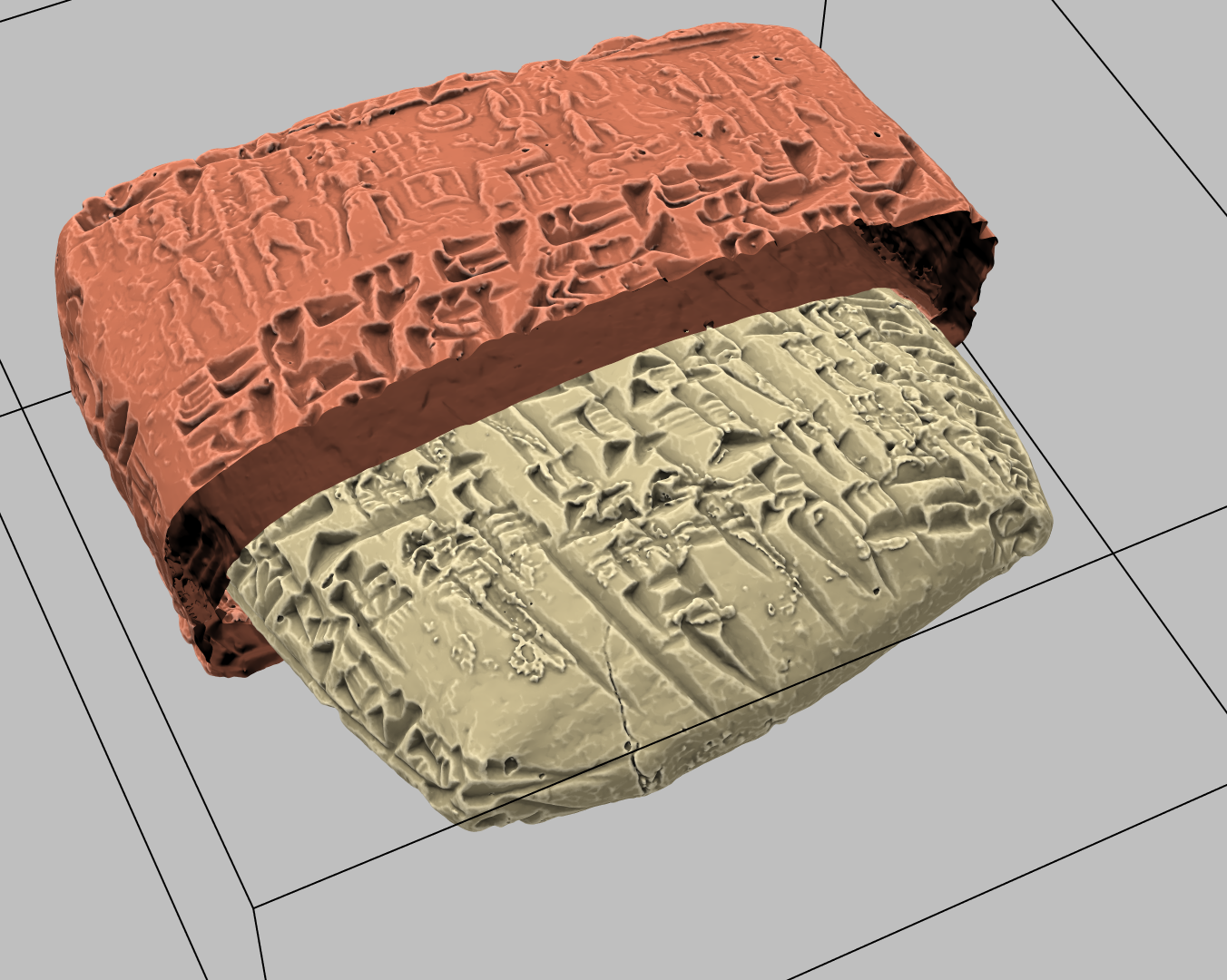Efficient Analysis and Visualization of High-Resolution Computed Tomography Data for the Exploration of Enclosed Cuneiform Tablets
Stephan Olbrich - Universität Hamburg, Hamburg, Germany
Andreas Beckert - Universität Hamburg, Hamburg, Germany
Cécile Michel - Centre National de la Recherche Scientifique (CNRS), Nanterre, France
Christian Schroer - Deutsches Elektronen-Synchrotron (DESY), Hamburg, Germany. Universität Hamburg, Hamburg, Germany
Samaneh Ehteram - Deutsches Elektronen-Synchrotron (DESY), Hamburg, Germany. Universität Hamburg, Hamburg, Germany
Andreas Schropp - Deutsches Elektronen-Synchrotron (DESY), Hamburg, Germany
Philipp Paetzold - Deutsches Elektronen-Synchrotron (DESY), Hamburg, Germany
Screen-reader Accessible PDF
Download preprint PDF
Room: Bayshore II
2024-10-13T16:00:00ZGMT-0600Change your timezone on the schedule page
2024-10-13T16:00:00Z

Abstract
Cuneiform is the earliest known system of writing, first developed for the Sumerian language of southern Mesopotamia in the second half of the 4th millennium BC. Cuneiform signs are obtained by impressing a stylus on fresh clay tablets. For certain purposes, e.g. authentication by seal imprint, some cuneiform tablets were enclosed in clay envelopes, which cannot be opened without destroying them. The aim of our interdisciplinary project is the non-invasive study of clay tablets. A portable X-ray micro-CT scanner is developed to acquire density data of such artifacts on a high-resolution, regular 3D grid at collection sites. The resulting volume data is processed through feature-preserving denoising, extraction of high-accuracy surfaces using a manifold dual marching cubes algorithm and extraction of local features by enhanced curvature rendering and ambient occlusion. For the non-invasive study of cuneiform inscriptions, the tablet is virtually separated from its envelope by curvature-based segmentation. The computational- and data-intensive algorithms are optimized for near-real-time offline usage with limited resources at collection sites. To visualize the complexity-reduced and octree-based compressed representation of surfaces, we develop and implement an interactive application. To facilitate the analysis of such clay tablets, we implement shape-based feature extraction algorithms to enhance cuneiform recognition. Our workflow supports innovative 3D display and interaction techniques such as autostereoscopic displays and gesture control.